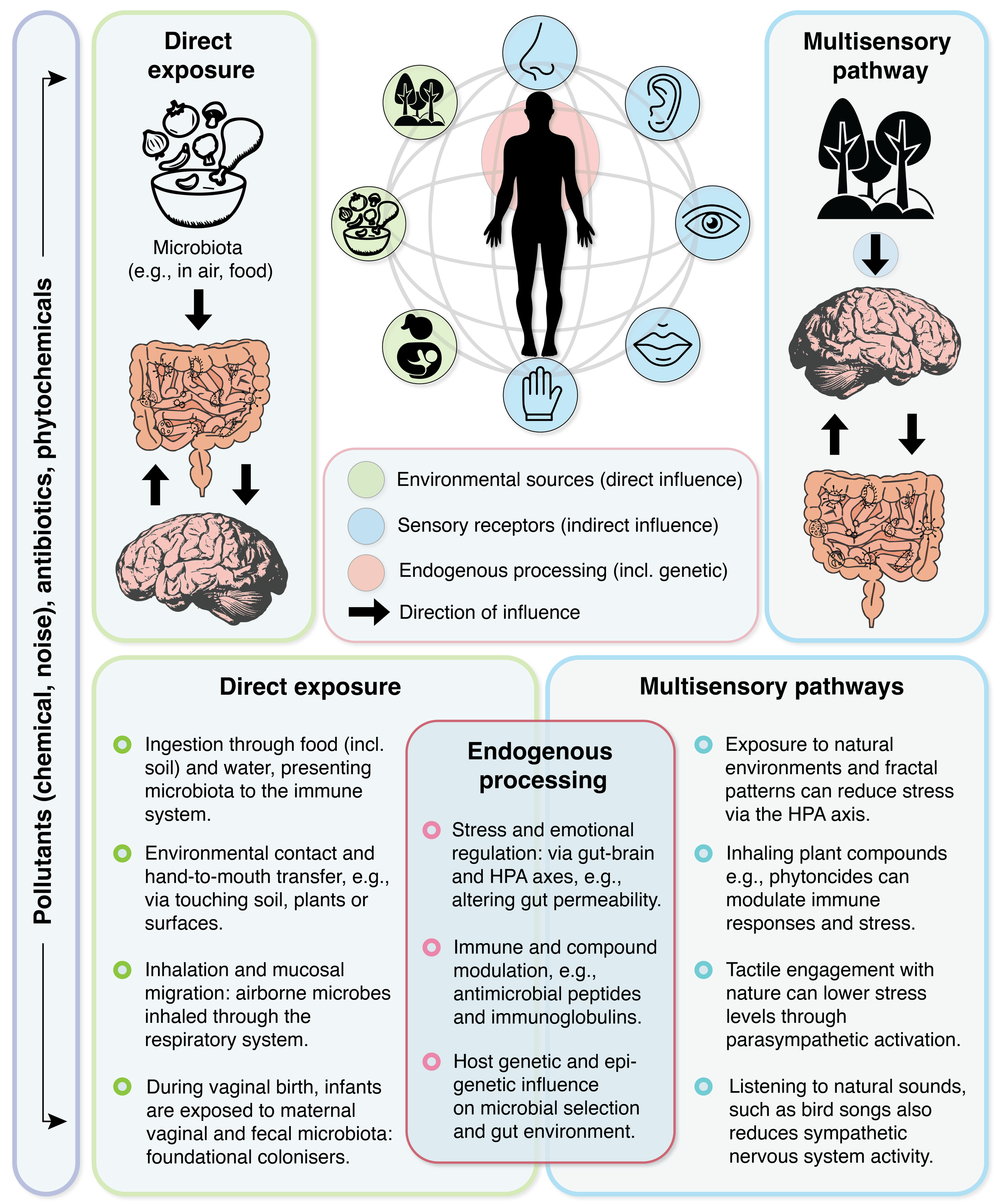Beyond microbial colonisation
Check out our new paper: Beyond microbial exposure and colonization: multisensory shaping of the gut microbiome by Robinson and Breed, 2025
Microorganisms play a fundamental role in human health, contributing to digestion, immune regulation, and metabolic processes. While direct colonization by environmental microbes through ingestion, inhalation, and dermal contact has been documented, evidence suggests that multisensory interactions with nature—via visual, auditory, tactile, gustatory, and olfactory stimuli—also influence the gut microbiome through psychophysiological and immune-mediated pathways. Exposure to natural environments can regulate stress and immune responses, activate the parasympathetic nervous system, and modulate the hypothalamic–pituitary–adrenal and gut–brain axes, which in turn may alter gut microbiome composition and function. Furthermore, sensory interactions with nature may induce epigenetic changes that impact immune function and microbiome dynamics over time. Here, we review evidence for nature-based indirect shaping of the human microbiome (including multisensory and exposure-immunoregulation pathways) and suggest that after the early-life critical window of microbiome development (0–3 years), these indirect effects likely have a greater influence on gut microbiome dynamics than direct colonization by environmental microbiota (e.g., ingested directly from the air). However, this concept remains to be comprehensively tested. Therefore, understanding the relative contributions of direct microbial colonization versus indirect effects—such as multisensory stimulation and immune modulation—demands more integrated, transdisciplinary research. Integrating these insights into public health strategies, urban design, and nature-based interventions could promote microbiome eubiosis, ultimately improving human (and non-human animal) well-being in an era of increasing environmental and health challenges.

